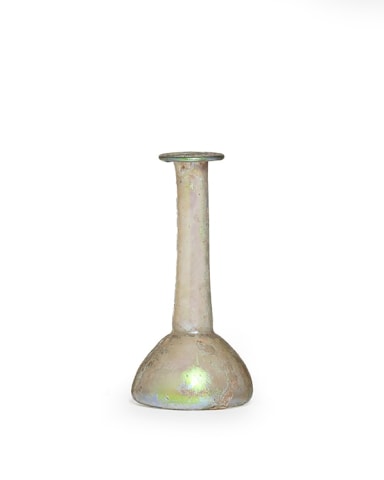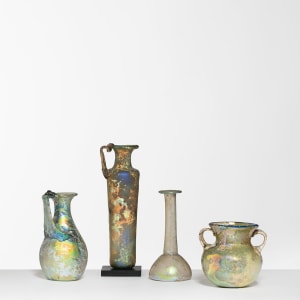16. Roman unguentarium with iridescence, 1st-2nd century AD
Glass
Height: 14.5cm
11273 IVP
Free-blown in clear glass. The squat hemispherical body has a slightly pushed-in base, a tall cylindrical neck and out-turned and inward-folded lip. Old white rectangular collection label with ‘274’ typed...
Free-blown in clear glass. The squat hemispherical body has a slightly pushed-in base, a tall cylindrical neck and out-turned and inward-folded lip. Old white rectangular collection label with ‘274’ typed in black on the neck. Intact, the surface with minor pitting that is filled with a brilliant rainbow-like iridescence, and a thin layer of iridescence over the whole vessel.
Provenance
Louis-Gabriel Bellon (1819-1899), St. Nicholas-les-Arras, France; collection no.274Bellon was one of the greatest French collectors of the 19th century. Making his fortune in the textile industry, he began to buy and collect archaeological pieces from the Mediterranean world. Until the end of the 1870s, he accompanied Auguste Ternick in archaeological excavations in the Arras region. It was there that he discovered the Gallo-Roman glassworks which subsequently constituted the most important part of his collection. His collection gained notoriety during the retrospective exhibition of French Art which took place at the Trocadéro in 1896, alongside those of Auguste Dutuit and the Protat printers. Today, part of the collection is kept at the Museum of National Antiquities of Saint-Germain-en-Laye, the Petit Palais in Paris, the Louvre Museum, and the Berck-sur-Mer museum.



